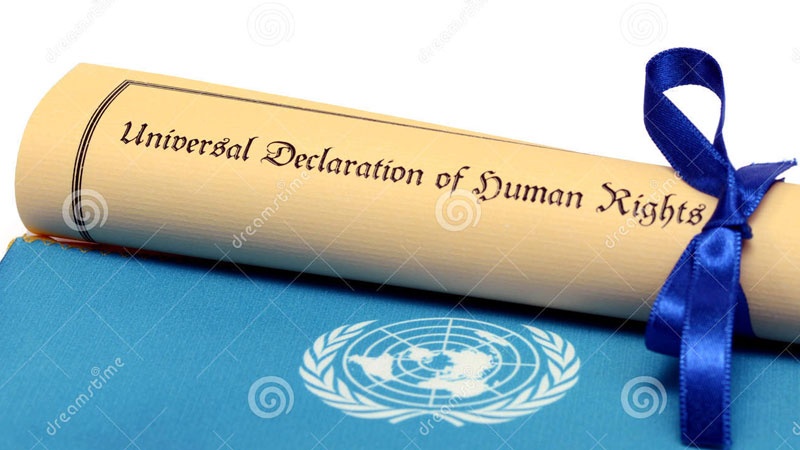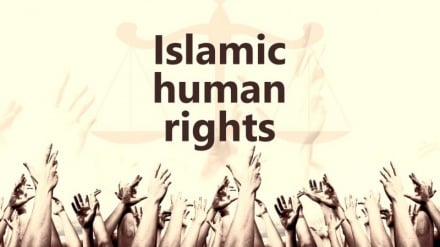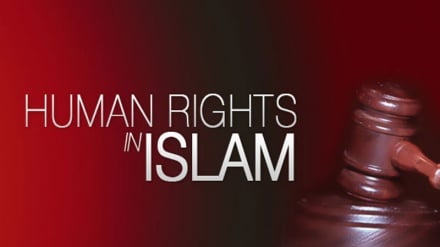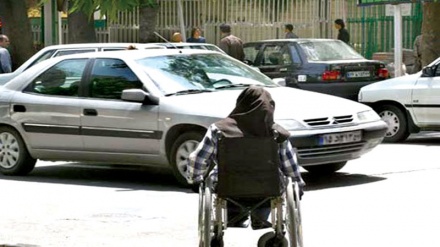Islamic human rights (5)
-

Universal Declaration of Human Rights
Today, we continue to study the formation of West’s Declaration of Human Rights.
Last week it was mentioned that the break out of the horrific World War I and World War II prompted the global public opinion to pay especial attention to the concept of human rights. This is because based on this concept, the principle of equality of human beings, irrespective of their race, language, religion, and gender, in addition to the principle of solidarity can set the stage for establishment and maintenance of peace, amity, and fraternity among different nations, round the world. On this basis, the Universal Declaration of Human Rights, and thereafter the International Covenant on Civil and Political Rights, as well as the International Covenant on Economic, Social, and Cultural Rights were approved. After this period of time, a number of other conventions were approved with the aim of supporting vulnerable strata, including women, children, refugees, and workers. With the preparation and approval of international covenants and conventions, the implementation of human rights was significantly cemented and secured.
Although the Universal Declaration of Human Rights presented its global prophecy as promotion of human rights and equality of human beings, a number of movements took shape in different continents for protection and promotion of human rights. The regional movement of human rights cannot be considered to be in contrast to the prophecy of the Universal Declaration of Human Rights. The logic of this regional movement has been that since the materialization and implementation of the principles of the Universal Declaration is still globally impossible, these principles should at least be materialized in the regional domain. Meanwhile, this regional movement can be observed in Europe, America, Asia, and Africa.
In Europe, two regional organizations of the European Council and the
European Economic Community, which were two parallel organizations operating for a long time, ultimately merged. The European Council is an international organization which was founded based on the May 5, 1949 London Treaty. This council is comprised of countries that maintain a mutual understanding on the fundamental principles, rooted in European civilization. The goal behind formation of this council was to stand up against threats posed by communism after the termination of World War II.
Up to now, more than a hundred conventions have been prepared under the support of the European Council. Some of these conventions are related to freedoms which have been approved by the state members. The European convention which secures and supports human rights and fundamental freedoms, approved on November 4, 1950 is among the most important of those conventions in regard to content and terms of supervision. This convention was enforced on September 3, 1953. This convention includes personal, social, civil, and political freedoms which are viable within the framework of democratic governments.
On the other hand, the European Economic Community plays a relatively significant role in the domain of human rights. In the 1951 Paris Treaty and 1957 Rome Treaty, the inclination toward improvement of living and working conditions for people, is visible. Also respect for human rights is the inevitable condition of dependence of each of these governments on the economic community.
The European Parliament has repeatedly placed support for human rights on its agenda and has approved several resolutions to this end. The European document approved on February 17 and 18, 1986, in its introduction emphasizes that all twelve member states are resolved to boost democracy, and to set the foundation of fundamental rights in constitutions and other rules and regulations of the member states of the convention of support for human rights and the European social charter, especially in regard to freedom, equality, and social justice.
A number of measures were also taken in the American continent for revival and promotion of the concept of human rights. Throughout the Bogota Conference in the year 1948, the charter of Organization of American States and the American Declaration on the Rights and Duties of Man was accepted and approved. This declaration was solely a recommendation and was void of any legal credibility. This declaration was different to the American convention on human rights, which was approved in the year 1969 AD by the Organization of American States in Costa Rica and was enforced on July 18, 1978. This convention is a detailed text, which has turned into a treaty, and states the principles of the American Declaration. However, given the underdeveloped state of South American countries, this convention doesn’t seem to be realistic. The convention at times precisely attends civil and political rights, while concurrently cautiously dealing with economic, cultural, and social rights. These rights are tied to gradual development based on the means of any given country. This development has relatively taken place based on a 22-article additional protocol that is comprised of social rights. This protocol has been currently declared to governments.
Africa, despite its liberation from the yoke of colonialism, has never been witness to emergence of a movement, supporting human rights. The Charter of Organization of African Unity which was approved in Addis Ababa in the year 1963 focuses on the right of people to determine their own fate, and to campaign against colonialism and racial discrimination. This charter is on human rights and expresses a collective and united insight on human rights that was unanimously approved at the General Assembly of the Organization of African Unity in Nairobi on June 12, 1981, and was enforced on October 12, 1986. By the end of the year 1989, thirty-five countries joined this charter. This charter includes part of the rights stated in the 1948 Universal Declaration. Initially, this charter attached importance to the right to development as the necessary condition in respecting civil and political rights. This hierarchy has to this day negatively impacted Africa.
Asia, which is the most populous continent in the world, maintains cultural diversity and has a particular situation compared to other regions of the world. Meanwhile, given that this region faces several problems in compliance with human rights and freedoms, an important achievement is yet to be made in preparation of common legal norms and establishment of regional supervisory means among Eastern countries. Concurrently, some of the efforts and achievements in the sub-regional levels cannot be neglected. For instance, the Southeast Asian countries, within the framework of the Association of Southeast Asian Nations (ASEAN) have approved a series of joint documents on human rights and have adopted especial means to follow up on the said documents.
Moreover, in the pacific region, a number of joint documents on human rights have been approved by the regional countries. The Arab League member states; the majority of which are Asian countries, have also ratified a number of joint documents; the most important of which is the Arab Charter on Human Rights.
In addition to inner activities of each geographical region to shape regional norms and means, and to advance human rights, the UN has also taken a number of measures within the framework of General Assembly and/or Human Rights Council ratifications, especially in Asia and Pacific regions, to establish significant capacities and to converge on a number of joint regional concepts, norms, and/or means.
Meanwhile, in the Islamic world, due to the contrast of Islamic principles with the concepts of human rights, which are based on Western philosophy, the Islamic Declaration of Human Rights has been prepared, which will be studied, next week.
MR/ME


